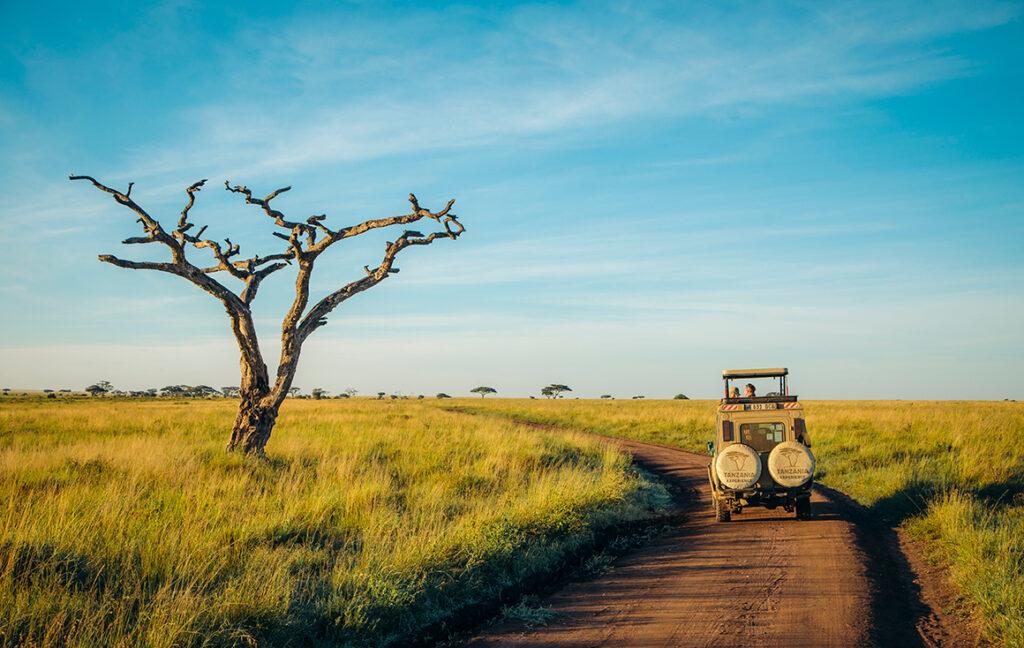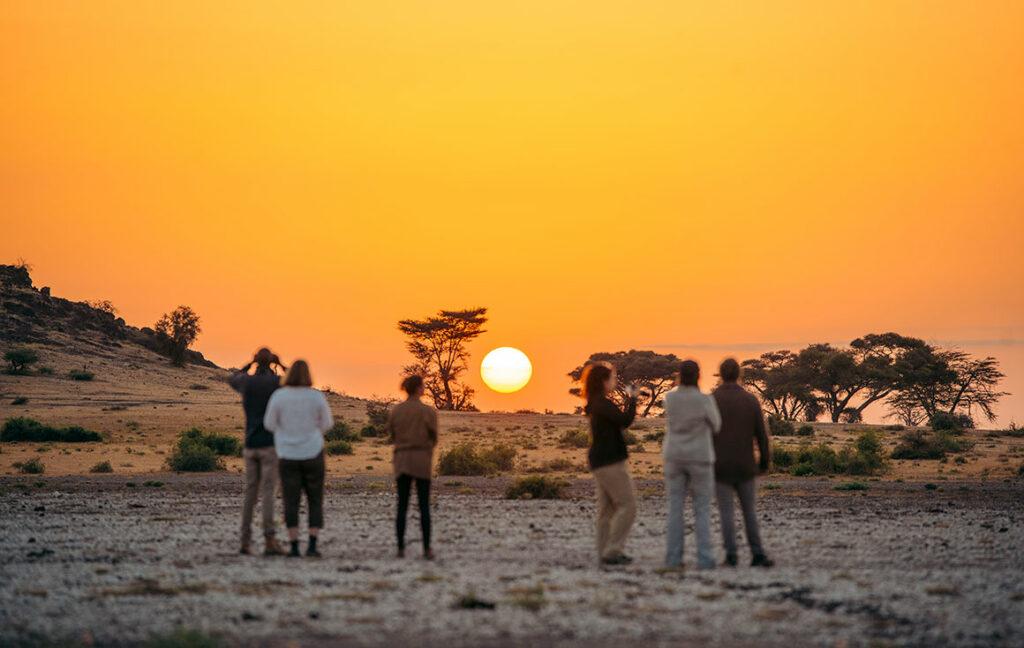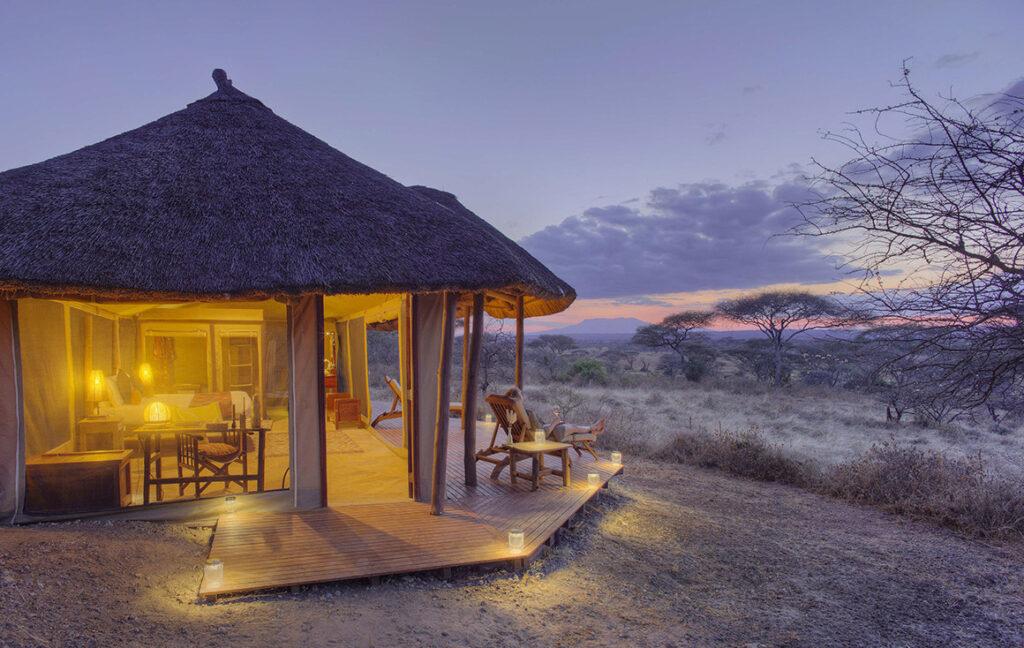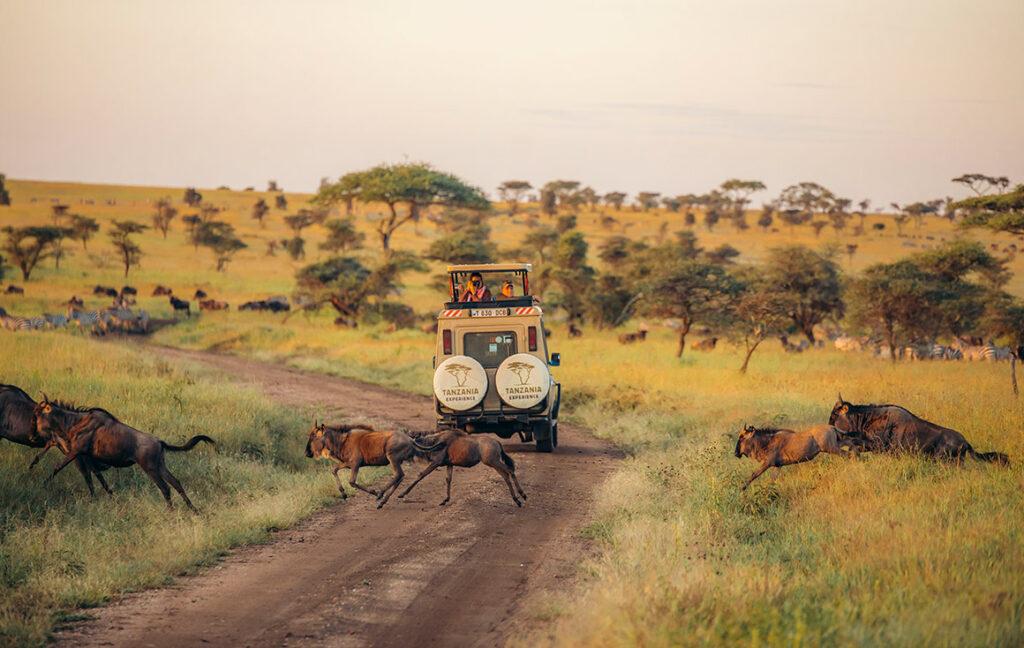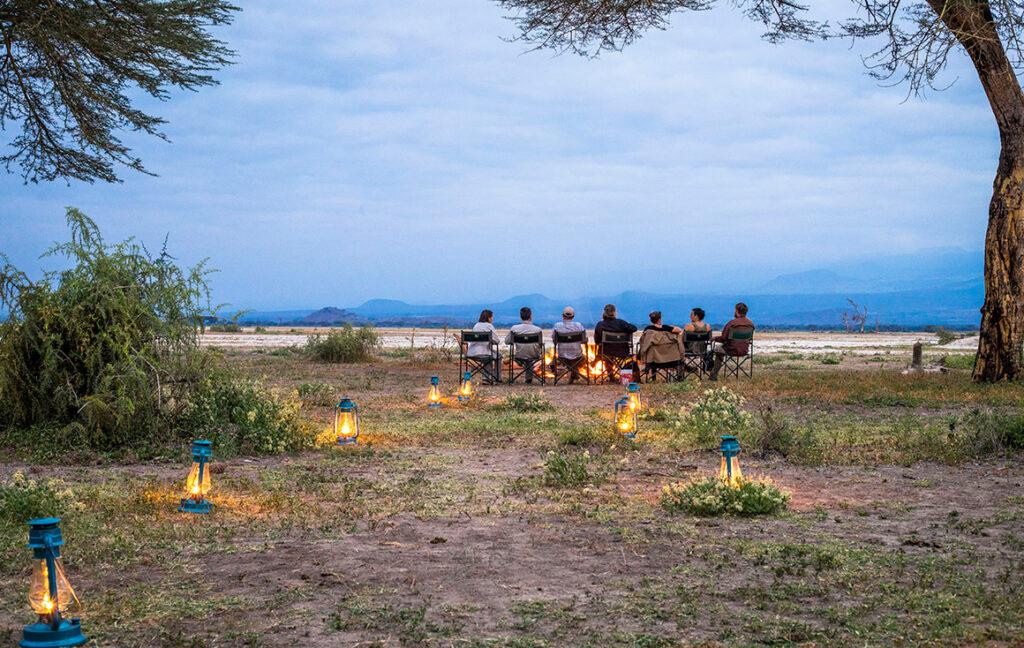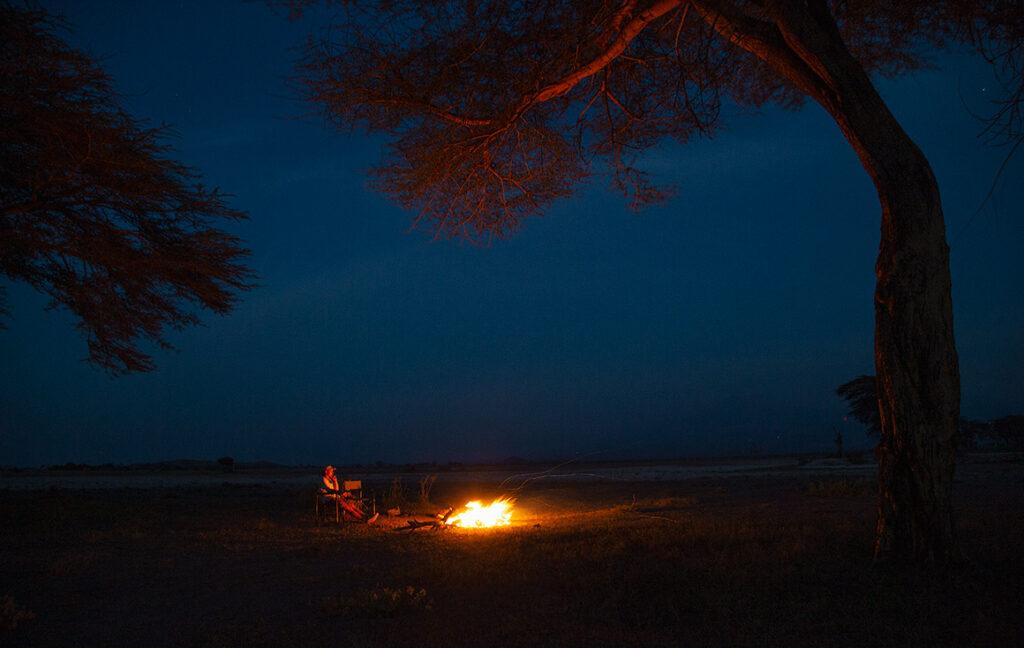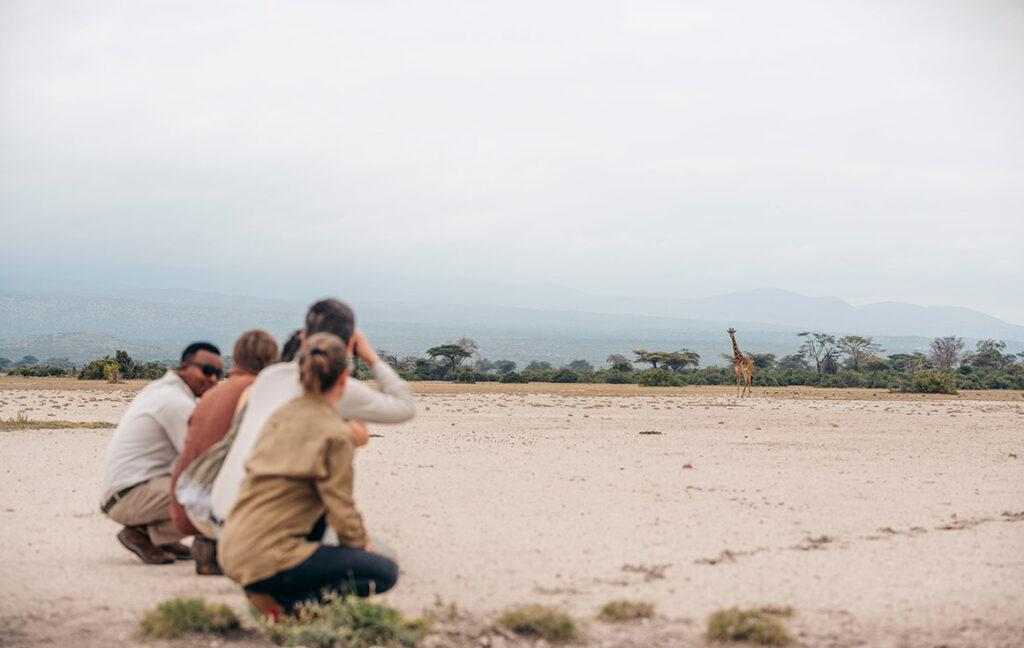Best time to visit Tanzania
For the classic safari experience, beach holiday on Zanzibar or trek up Kilimanjaro, the best time to visit Tanzania is during the dry season from June to October. During this five-month period of no rain, wildlife congregates around water holes and rivers, creating the best possible game viewing experience. What is more, all of the national parks in Tanzania are visitable, giving you plenty of choice on where to go. The great wildebeest migration reaches its crescendo in July when countless numbers of wildebeest attempt the dangerous river crossings in the Serengeti National Park. Great weather, crystal clear seas and white sandy beaches makes a tropical beach holiday on Zanzibar perfect during the dry season. It is also the best weather to trek Kilimanjaro.
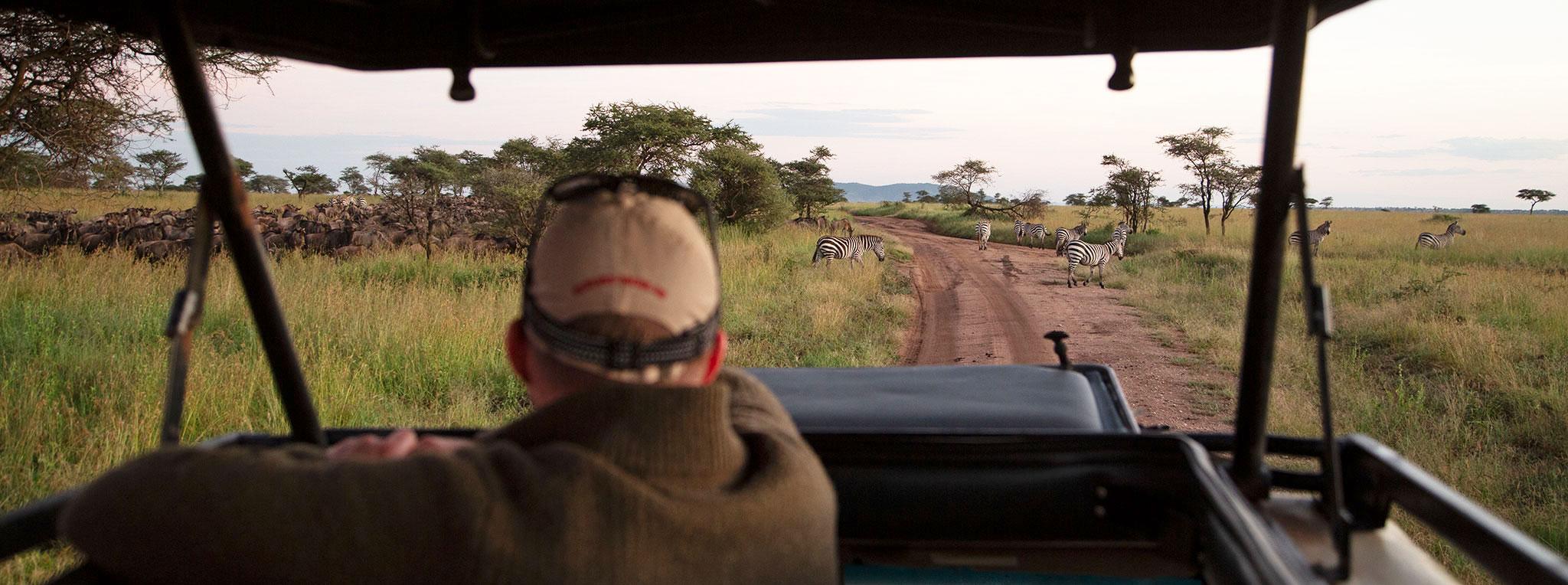
THE BEST TIME TO VISIT TANZANIA - BY SEASON
When is the high season?
The high season in Tanzania runs from July to March with a short rainy break in November. However, in the wildlife parks to the south and west of Tanzania the high seasons runs from June to October.
During the high season accommodation prices can be higher. Our goal is to plan for and provide guests with intimate experiences, but bear in mind that this will be the peak travel period to Tanzania’s most famous game parks. If you are looking for a more secluded safari, one of our country experts can help you choose less visited parks to the south or west of Tanzania. Or, if you are on a budget, you could consider one of our intimate group tours, which provides you with the same amazing experience at a reduced cost.
When is the low season?
The low season, brought about by the long rains, occurs in Tanzania from April to May. With the abundance of available grass, the wildlife becomes harder to see as it moves further away from its dry-season-water-sources. However, the green vibrant landscape with a wealth of migratory birds certainly makes up for this.
Camps to the north tend to remain open. However some of the accommodations in southern Tanzania can close during this period. The Zanzibar archipelago can receive large amounts of heavy rain, which makes a dream-beach-holiday less advisable in these months.
Prices are lower during this period and if you are open to suggestions from one our country-experts, we could help you plan a unique experience to Tanzania during the low season.
When is the dry season?
The dry season in Tanzania occurs from June to October and it is the best time to visit Tanzania.
Inland, and depending on where you would like to visit, you can expect to experience dry day-time temperatures ranging from 20°C/68°F to 30°C/86°F. Surprisingly, temperatures can fall rapidly at night, so don’t forget to pack warm clothes for when you partake in an early morning game drive. If at altitude, such as the rim of Ngorongoro crater or Mount Kilimanjaro, temperatures will be much lower. In general, there is very little rain, low levels of humidity and beautiful blue skies during this season.
The Tanzania coastline and the Zanzibar archipelago has a tropical climate. The best time to visit Zanzibar is also during the dry season, due to low humidity, warm weather and low chance of rain. The dry season has the perfect weather for your post-safari beach destination.
When is the rainy season?
Tanzania experiences two rainy seasons, the short and the long rains. Both influence the best time to visit Tanzania, however, the long rains will have the greatest impact on a safari, trek, climb or beach holiday to Tanzania.
The short rains last from November to December. Often unpredictable, it creates a flush of green growth and it is a beautiful time to visit Tanzania. Returning migratory birds are another highlight.
January to February experiences a break from the rain and it happens to coincide with the start to the wildebeests calving season in the Serengeti National Park. Low-season-prices are on offer in some of the southern parks, making this period one of the best times to visit Tanzania.
The long rains occur in March to May thanks to the south-east trade winds carrying huge amounts of rain inland. Often coming in bursts, heavy rain can be expected nearly every day.
THE BEST TIME TO VISIT TANZANIA - BY REGION
Serengeti National Park
The best time to visit the Serengeti National Park and to see the great wildebeest migration is from June to October. To see 2 million animals (including zebra, and gazelle) moving through the landscape can take your breath away. Inevitably, large number of herbivores attracts condensed populations of predators. The drama played-out through the plains and particularly the river crossings is enthralling. It is a true, once-in-a-lifetime opportunity. Please be aware that it can get quite busy with safari vehicles and visitors during this time.
In November to December a flush of green growth triggers the wildebeest in the north to return from Kenya’s Masai Mara to the Serengeti National Park. An endless horizon of grassland, interspersed by islands of rocky outcrops, called koppies, makes this an incredible time to visit the park.
From January to February the park becomes a grassland nursery for thousands of wildebeest and consequently the wildebeest carving season begins. New life emerging on the great plains is an opportunity to view large numbers of predators and creates a spectacle that will play on all of your senses.
Despite being the rainy season, it is still possible to visit the park in March to April. Territorial predators remain in the park year-round and sedentary wildlife still can be seen in this period.
The wildebeest rut, or mating season, takes place in May to June. As long columns of wildebeest make their way through the landscape, males clash heads in a battle for a group or corral of females. Often distracted, with more than two-males in the mix, they can be taken prey.
Tarangire National Park
The best time to visit Tarangire National Park is from June to October. The dry season makes the curving Tarangire river one of the only water-sources for hundreds of miles around, consequently the wildlife flocks there. During this time a mini wildebeest migration occurs, and the park becomes an elephant lover’s paradise as hundreds of elephants congregate along the river.
The short rains from November to December turn the park green. Bird watching is fantastic as the arrival of migratory bird commences. At its peak, 550 bird species have been recorded in the park.
January to February experiences a period of dry weather. The landscape provides a beautiful backdrop to the hundreds of ginormous baobab trees and game viewing is still excellent.
In March to May the wildlife wanders away from the river and game viewing is not as good and some of the accommodation in the park can close.
Ngorongoro Crater
Ngorongoro Crater is visitable all year around thanks to large number of resident animals. Crater floor temperatures range from 20°C/68°F to 25°C/77°F throughout the year, however, temperatures fall dramatically at night.
The best time to visit Ngorongoro Crater is June to October, because the shorter grass during the dry season makes for exceptional game viewing. Please be aware that there will be quite a high number of safari vehicles and visitors in the Crater during this time.
The short rains in November to December has a minimal impact on a safari to Ngorongoro Crater and the game viewing is still excellent during this period.
The short dry period in January to February is one the best times to visit Ngorongoro Crater if you want to experience the wildebeest calving season.
Game viewing in the rainy season, March to May, is more challenging. However, you can still expect to see an array of wildlife. Heavy rains, particularly at the crater rim, can occur almost daily. However, visitor numbers and prices are lower.
Southern Tanzania
The best time to visit southern Tanzania is the dry season from June to November as game-viewing is extraordinary during this season. Large numbers of animals, particularly elephants, gather near water sources and predators, such as lions, cheetahs, hyenas, and leopard await them. It is also possible to see unique animals like the Sable and Roan antelope and even the very rare wild dogs. The average dry season temperature is 27°C/80°F – June being the coolest month and October the hottest.
The rainy season in southern Tanzania is from December to March. This means, the rainy season in Southern Tanzania is longer than in Northern Tanzania. Generally, it rains in the heat of the afternoon. Heavy rain can make some parts of parks inaccessible and wildlife becomes harder to see. However, it is a beautiful time of year and you can find some low season prices. Since some camps close during some weeks of this rainy period, good planning is essential. April and May see fewer rains and lush green landscapes.
THE BEST TIME TO VISIT TANZANIA - BY ACTIVITY
Safaris and Game Viewing
The best time to enjoy a safari and view game in Tanzania is June to October. During this time hundreds of herbivores gather near to water sources and dense numbers of predators will be waiting for them.
The great wildebeest migration occurs during the dry season, and in July the famous river-crossings take place. Other important months on the wildebeest migration calendar are January to February to see the calving season or May and June to experience the rut (mating season). Both events are spectacular to behold.
January and February are generally dry months, but with fewer visitors in the national parks – a great time for a safari!
The perfect safari weather occurs during the dry season with low humidity and temperatures ranging from 20°C (68°F) to 30°C (86°F). Nights and mornings are cool.
Bird watchers will enjoy seeing the resident birds in the dry season and the arrival of the migratory birds in November and December.
Kilimanjaro Trekking
The best time to trek Mount Kilimanjaro is the dry season, from June to October, or from January to February when the weather is also dry. If you would like to have a guaranteed experience, either of these two periods of dry weather, June to October, or January to February, are the two optimum periods to trek Mount Kilimanjaro.
However, this is the peak season on the mountain, so if you want to avoid the crowds whilst trekking Kilimanjaro, try to consider periods outside these months.
March to May is the wet season in Tanzania and it is generally not recommended to trek the mountain, however, it is theoretically possible to trek Mount Kilimanjaro throughout the year. For help planning your trek contact one of our country experts.
Beach Holiday on Zanzibar
The best time for a beach holiday on Zanzibar is June to October. Cystal clear sea, coconut trees bowing over white sandy beaches, low humidity, yet warm weather with no rain, all combine to create the best time for a tropical beach holiday on Zanzibar.
Snorkelling and diving on the coral reef can be incredible from June to February, depending on the weather. However, January to March is the best time to dive on Zanzibar. Plan your diving experience in September to coincide with hatching turtles or December if you want to share the water with whale sharks.
If you enjoy the heat and humidity, January and February is the period for you. March to May is the rainy season and it is worth avoiding this period if you are hoping for the dream beach holiday on Zanzibar.


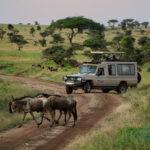
Experience Tanzania with us
Speak to one of our travel experts
Let's start planning your trip!
We will get back to you within 2 working days.
 on Tripadvisor
on Tripadvisor


